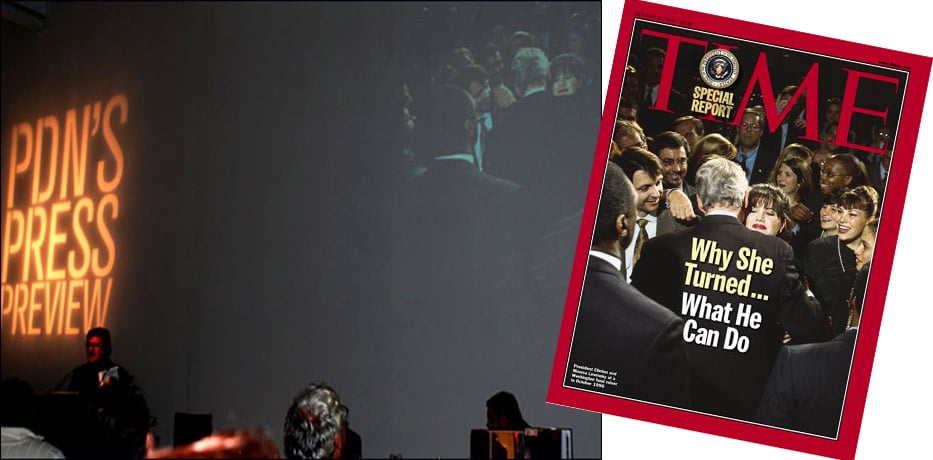
One of the things I point out in my upcoming State of the Art column (In the Oct/Nov issue out on Sept. 1) is that when you attend a trade show or convention, you’ll often hear some fascinating panel discussions, which often include thoughts on or debates over technology. One of my favorite roundtables took place in 2006 at a special event at the Photo Plus Expo in New York featuring three renowned photographers: Dirck Halstead, Frans Lanting and Joel Meyerowitz. It was a short anecdote by Halstead that stuck in my memory, for a couple of reasons:
Halstead recalled how he was able to find a remarkable photo, which was nearly lost in his archives, of former President Bill Clinton and Monica Lewinsky, the White House intern whom with Clinton had had an affair, an incident which would eventually lead to his impeachment. But while telling the story of finding that photo, he also revealed in a very powerful way how film photographers worked differently from those who shot with digital cameras. And, at least in this example, an older technology proved to be a better solution.
Here’s the gist of what Halstead said:
Like most photojournalists, he often attended political events, often shooting hundreds of photos of the president interacting with dozens and dozens of people, most of them unremarkable and forgettable, at least to a photojournalist. During the 1996 presidential campaign, Halstead was at such an event, a particular fundraiser a few days before the election, and shot photos throughout the night, right up until the end. And just like many other photographers who attended the same event, Halstead never really looked at many of the shots he’d taken that night, since many of the shots included those same unmemorable attendees.
But what made Halstead slightly different from other shooters at that event was that Halstead was still shooting with 35mm film SLRs, and hadn’t yet made the switch to digital. Why was it significant that he hadn’t yet gone digital? According to him, it’s what allowed him to find what would turn out to be an award-winning photo.
Several months after the fundraiser, the news broke that Clinton had indeed had an affair with Lewinsky. When Halstead learned of the news, he asked one of his assistants to sift through thousands of “discarded” film slides from his archives. He had a vague hunch, and asked her to see if she could find anything that might be “interesting”. Her search came up with a remarkable image of Clinton at the fundraiser actually embracing Lewinsky, the affair unbeknownst to anyone in the media or the world at the time the photo was shot!
After telling the anecdote about finding this photo, which was used on the cover of Time magazine and won Halstead an Eisie Award for cover photography, the photographer pointed out why it was significant that he was shooting film: He noted that others photojournalist who were shooting digital cameras probably deleted near identical images from their memory cards right after the event.
Terry Sullivan is the former editor of Professional Artist magazine and the former technical editor at American Artist magazine. He currently is an editor at Consumer Reports, where he covers digital cameras, camcorders, smart phones, printers and digital imaging. He is also an artist and musician. Follow him on Twitter: @TerryCR.



